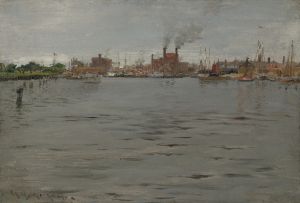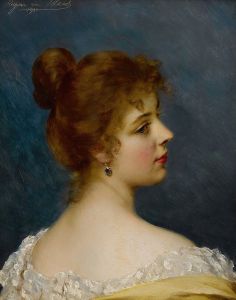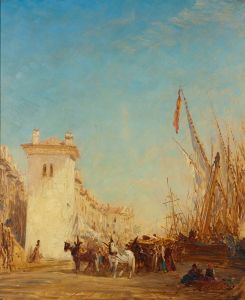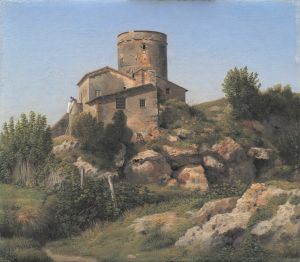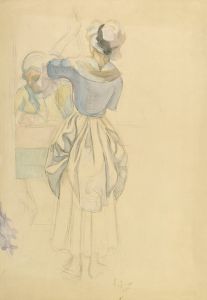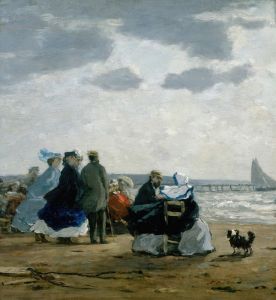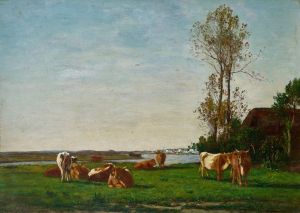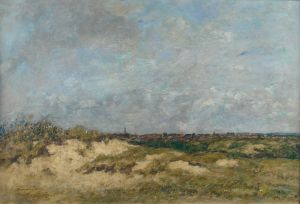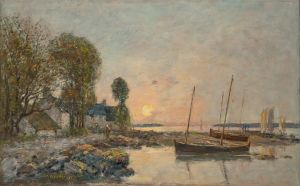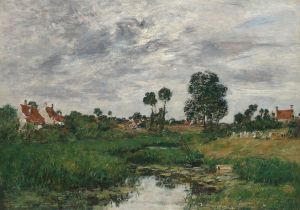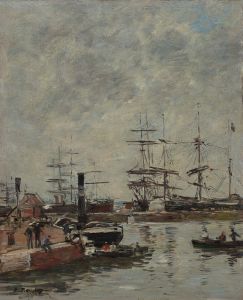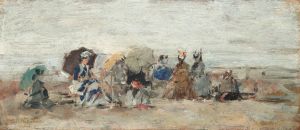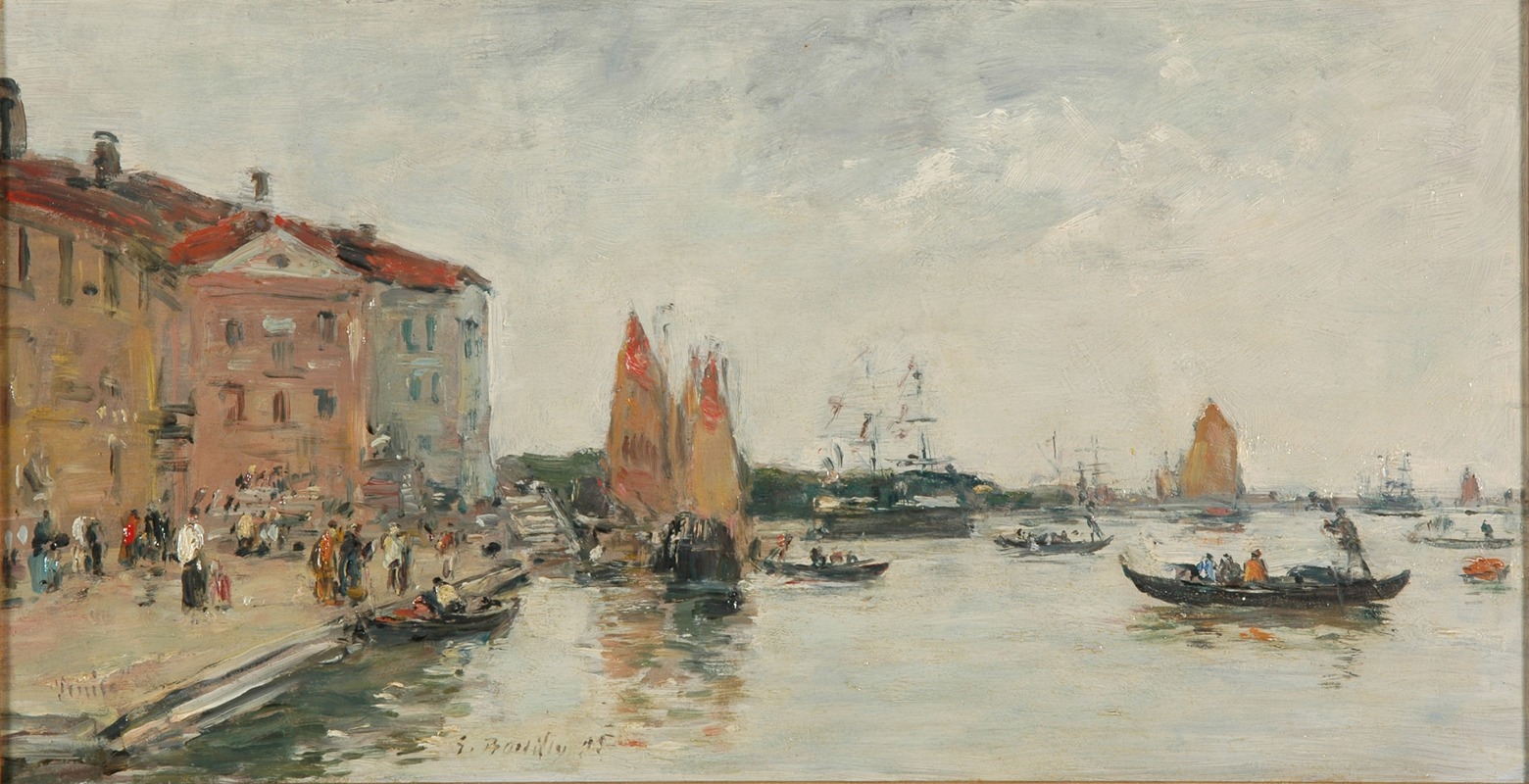
Venise; le quai et l’église San Biagio
A hand-painted replica of Eugène Boudin’s masterpiece Venise; le quai et l’église San Biagio, meticulously crafted by professional artists to capture the true essence of the original. Each piece is created with museum-quality canvas and rare mineral pigments, carefully painted by experienced artists with delicate brushstrokes and rich, layered colors to perfectly recreate the texture of the original artwork. Unlike machine-printed reproductions, this hand-painted version brings the painting to life, infused with the artist’s emotions and skill in every stroke. Whether for personal collection or home decoration, it instantly elevates the artistic atmosphere of any space.
Eugène Boudin, a prominent French painter, is renowned for his landscape paintings and his role as a precursor to the Impressionist movement. One of his notable works is "Venise; le quai et l’église San Biagio," which captures a scene in Venice, Italy. Boudin was known for his ability to depict the interplay of light and atmosphere, and this painting is a testament to his skill in rendering the unique ambiance of Venice.
"Venise; le quai et l’église San Biagio" showcases Boudin's fascination with maritime themes and his adeptness at portraying the bustling life along the quays of Venice. The painting features the quay and the Church of San Biagio, a location that offers a glimpse into the daily life and architectural beauty of the city. Boudin's work often focused on the transient effects of light and weather, and in this painting, he captures the shimmering reflections on the water and the soft, diffused light that characterizes Venice.
Boudin's technique involved painting en plein air, or outdoors, which allowed him to observe and capture the changing conditions of the environment directly onto his canvas. This approach was innovative at the time and influenced many Impressionist painters who followed. In "Venise; le quai et l’église San Biagio," Boudin's brushwork is loose and fluid, a style that effectively conveys the movement of water and the gentle sway of boats docked along the quay.
The painting is a fine example of Boudin's ability to blend realism with an impressionistic touch. His use of color is both subtle and vibrant, with a palette that reflects the natural hues of Venice's architecture and waterways. The composition is balanced, with the church providing a focal point that anchors the scene, while the surrounding activity of boats and figures adds a dynamic element to the work.
Boudin's depiction of Venice is not just a representation of a specific location but also an exploration of the city's atmospheric qualities. His attention to detail and his sensitivity to the effects of light make this painting a valuable contribution to the art of the 19th century. "Venise; le quai et l’église San Biagio" is a reflection of Boudin's mastery in capturing the essence of a place through his keen observation and artistic skill.
This painting is part of Boudin's broader body of work that includes numerous scenes of coastal life and urban landscapes. His influence on the Impressionist movement is significant, as he was one of the first artists to emphasize the importance of painting outdoors and capturing the fleeting moments of natural beauty. Boudin's legacy is evident in the works of later Impressionists, who adopted and expanded upon his techniques and thematic interests.
Overall, "Venise; le quai et l’église San Biagio" exemplifies Eugène Boudin's contribution to the development of modern landscape painting. His ability to convey the mood and atmosphere of Venice through his art continues to be appreciated by audiences and art historians alike.






